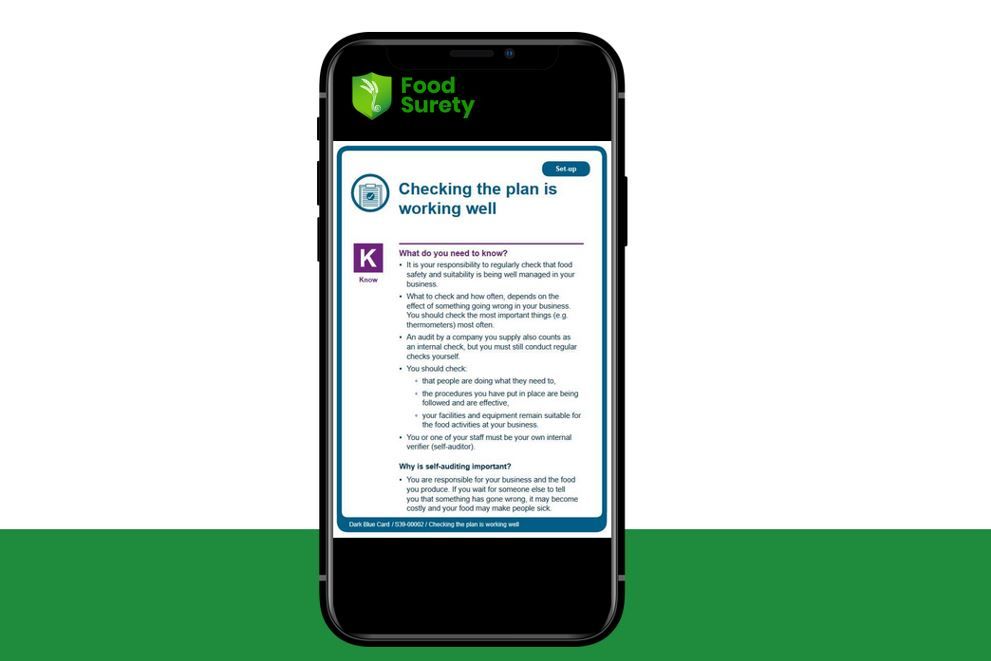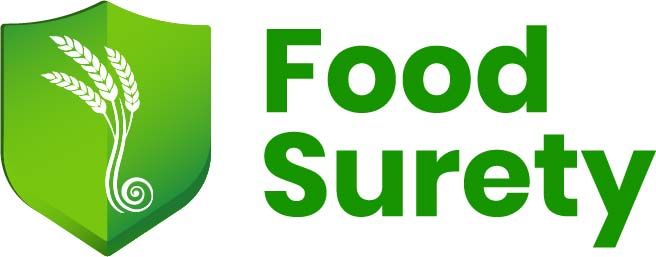5 Tips For Template Food Control Plan Operators

Introduction
Regardless of what product you are producing and in what setup, maintaining food safety practices and, supporting food handlers following appropriate food safety plans is a winning investment no business can afford to ignore.
As the operator of a food business, you are responsible for ensuring that the food you serve is safe to eat. This article explains what a Template Food Control Plan (tFCP) - Simply Safe & Suitable is, why should you effectively implement it, 5 tips to help you protect consumers, your business, and your brand as well as the common five FCP non-conformances we see in our audits.
What is a food control plan?
In New Zealand, certain food businesses are required by law, The Food Act 2014, to have a plan that covers all aspects of their operation.
It is a plan or a system made up of procedures your team members have to consistently adhere to in order to produce safe and suitable food. Luckily, you don't always have to create this plan yourself, a number of approved Food Control Plan templates are available for you to choose from.
As per the Ministry For Primary Industries and New Zealand food safety, " A Template Food Control Plan (FCP) is a pre-evaluated plan for managing food safety and suitability. If your business activities are covered by one of the available templates, you can use this rather than creating your own custom FCP".
A Food Control Plan is a document that outlines how you will manage food safety in your business. It sets out the procedures and controls you will put in place to make sure your food is safe.
Creating and following a Food Control Plan can seem daunting, but it doesn't have to be, thanks to the available approved template plans.
How does food control plan compliance help your business?
- It is a legal requirement for certain types of businesses e.g. restaurants, and cafes. This means you have to effectively implement it to satisfy your local council verifier and keep the door open!
- It helps you produce safe and suitable food protecting consumers and the brand
- Workplaces that use an FCP have less chance of getting food poisoning complaints and product recalls, which can seriously damage your business reputation and bottom line
- It maintains consistency as your team members follow documented procedures
- Effective implementation of a control plan should save you money! Less waste, reduced compliance cost, and efficient operations.
Sounds good, let's now dive into details.

5 Tips for effectively implementing your template Food Control Plan
There are a few key considerations you need to take into account when implementing your Food Safety Plan:
1. As an owner or operator you should prioritize food safety and demonstrate your commitment to it.
Put it this way, if you cut one corner your team will cut 10.
2. Make sure you have a clear understanding of the requirements of the food rules detailed in the Food Act 2014 and the Food Regulations 2015.
Usually what you need to know is clearly stated in the Template plan itself.
3. Use the template food control plan as a guide, but tailor it to your specific business needs. Keep the sections that apply to your operations and move the ones that do not to the back of the folder. Of course, using a cloud-based/digital plan is a strong option you can consider.
There are some great digital options out there that come with some advanced features to simplify food safety compliance. You can have your plan, documents, and records on your smartphone, tablets, and computer and can access them online meeting the requirements of New Zealand food safety standards.
4. Make sure you have adequate staff training on food safety procedures.Templates and food safety systems are important but it is people who produce safe food! Make sure you provide them with introductory food hygiene training and clearly communicate your expectations around prioritising food safety. This is what will help your brand grow in the long term really.
Your team should understand food controls used at your workplace to minimise the risk of food contamination and make sure that food is safe to eat. These controls might include food storing controls, cooking food to certain temperatures, cooling, or using specific acidification processes e.g. adding vinegar to sauces as well as cleaning and sanitising procedures.
5. Pay attention to the common problematic areas highlighted in the next section below
5 common food control plan non-conformances
- Your food plan must include procedures for sufficient tracing of food from receipt to sale, this is a food act requirement. This will help you to identify any contaminated food and take action to stop it from reaching consumers.
At your workplace, keep records of what was received when, and how much of it. Mark containers with the item name, expiry date, and where needed mark the opening date too.
- Allergen management
You need to list all the food allergens that are in your food products. Pay great attention to reading ingredients lists and allergen advice on every ingredient used in making your food product. Do not assume, do not guess, and train your team members very well.
- Cleaning and sanitising
This sounds obvious but it is one of the most common issues noted in our audits. Make sure you choose suitable cleaning products and use them correctly, does the label in your sanitiser say that it requires thorough rinsing after application, you might be surprised!
Clean often and thoroughly e.g. if you have grills, fryers, stoves, or hoods,... are these clean or super greasy? Are the floors clear of food crumbs, under the fridges and benches?
- Deciding shelf life of products
Making your own sauces is great but giving them 3 or 4 weeks of shelf life requires validation, you may need to read the template food control plan section titled: Using water activity, acid, or hot-smoking to control bugs
Vacuum packing perishable product is great but doesn't give them shelf life exceeding 10 days unless you have evidence that you are controlling a pathogen called Clostridium botulinum.
- Pest management
Keep doors closed, food off the floor, clean well, clear waste regularly and have a professional pest management technician/service provider inspecting your food premises regularly. All of this effort and cost is cheaper than one complaint that can kill your brand and business!
Conclusion
If you have any questions or need assistance, please feel free to contact us.
Latest From Food Surety Blog
Enrol in Our
E-learning Courses
Enrol in Our
Virtual Classroom Courses
Check Out Our
Free Resources

